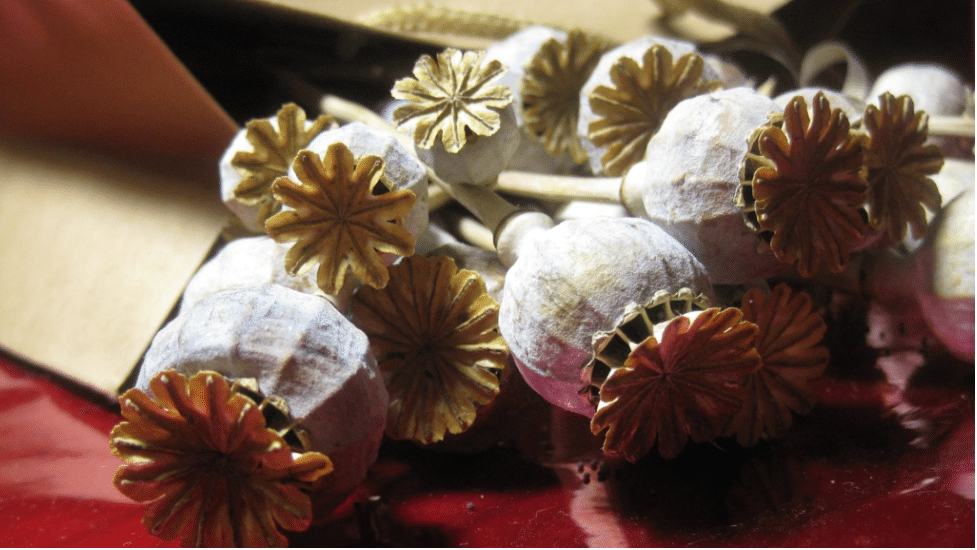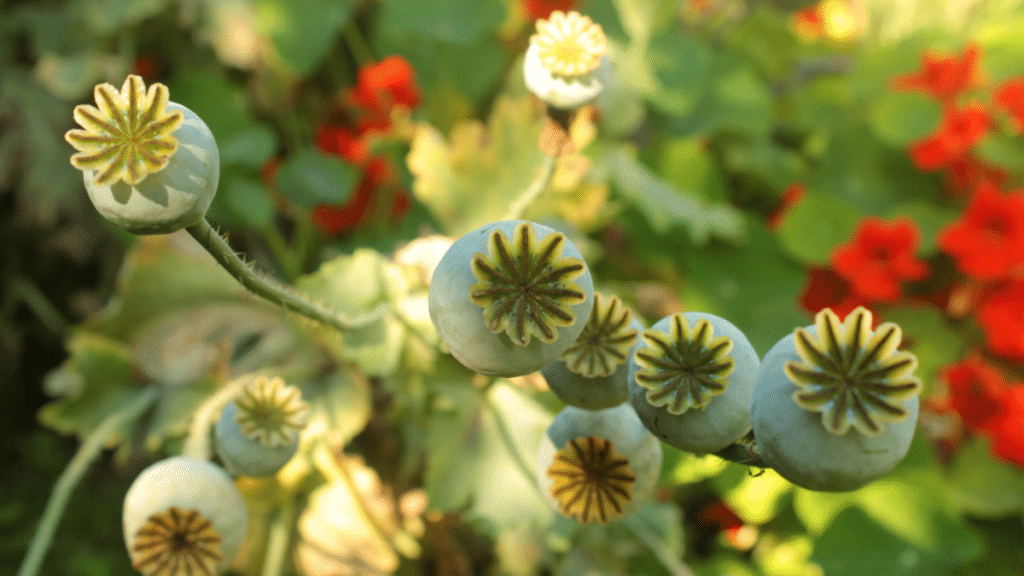Poppies are beautiful, easy-to-grow flowers that bring a touch of elegance to any garden. Whether you’re interested in growing them for their ornamental beauty, seed production, or dried floral arrangements, poppy pods are a great addition to any outdoor space. These flowers are relatively low maintenance but require specific conditions to thrive.
If you’re looking to cultivate your own poppy pods at home, this guide will provide everything you need to know. From selecting the right variety to harvesting and drying the pods, you’ll learn how to grow healthy poppies in your garden.
1. Choosing the Right Poppy Variety
Types of Poppies
Before you start growing poppies, it’s essential to choose the right variety. There are many types of poppies, but the most popular for home gardens include:
✔ Papaver somniferum (Opium Poppy): Known for its large seed pods and delicate flowers, this variety is commonly grown for ornamental purposes and seed production.
✔ Papaver rhoeas (Corn Poppy): Also known as the Flanders poppy, it has bright red petals and thrives in wildflower gardens.
✔ Papaver orientale (Oriental Poppy): A perennial variety with large, vibrant flowers and deeply fringed leaves.
✔ Papaver nudicaule (Iceland Poppy): Features delicate, pastel-colored blooms and thrives in cooler climates.
If you’re unsure which type to grow, many online stores offer poppy pods for sale, allowing you to choose from different varieties that suit your garden’s needs.
2. Selecting the Best Location for Your Poppy Garden
Poppies need plenty of sunlight and well-draining soil to thrive. Choose a location in your garden that receives at least 6–8 hours of direct sunlight per day.
✔ Avoid overly shaded areas, as poppies need sun to bloom.
✔ Ensure the soil is loose and well-draining, as poppies do not tolerate heavy, waterlogged soil.
✔ Consider raised garden beds or containers if your soil retains too much moisture.
3. Preparing the Soil for Planting
Poppies prefer soil that is slightly alkaline to neutral (pH 6.5–7.5). Before planting, prepare your garden bed by:
✔ Loosening the soil with a garden fork or tiller to a depth of about 12 inches.
✔ Adding organic matter, such as compost or aged manure, to improve soil fertility.
✔ Mixing in sand or perlite to improve drainage if the soil is too dense.
Good soil preparation will ensure that your poppies grow strong and produce healthy seed pods.
4. Planting Poppy Seeds for the Best Results
Poppy seeds are tiny and require light to germinate, so they should be surface-sown rather than buried.
✔ Scatter the seeds thinly over the prepared soil.
✔ Press them lightly into the soil with your hand or a flat board.
✔ Water gently using a misting spray to avoid washing the seeds away.
✔ Plant in early spring or late fall, as poppies thrive in cool weather and require a period of cold stratification to germinate properly.
Seeds usually take 10–14 days to sprout, but they can take longer if temperatures are too warm.

5. Watering and Caring for Your Poppy Plants
Poppies are relatively drought-tolerant once established, but they need consistent moisture during the early growth stages.
✔ Water sparingly – Overwatering can lead to root rot.
✔ Allow the soil to dry out between waterings.
✔ Use mulch to retain moisture and prevent weeds from competing with your plants.
Once your poppies are established, they require minimal care. However, removing weeds and trimming dead leaves will help maintain a healthy garden.
6. Encouraging Strong Growth and Blooms
Poppies don’t require heavy fertilization, but a light application of balanced fertilizer (such as a 10-10-10 mix) can help encourage blooms.
✔ Fertilize once during early growth to promote healthy leaves and stems.
✔ Avoid too much nitrogen, as this can lead to excessive foliage growth at the expense of flowers.
✔ Thin out crowded seedlings to give each plant enough space to grow.
7. When and How to Harvest Poppy Pods
Once your poppies have bloomed, they will begin to form seed pods. These pods contain seeds and can be used for decorative arrangements or seed collection.
✔ Wait until the pods turn brown and dry on the plant – This indicates they are ready for harvest.
✔ Cut the pods using sharp scissors or garden shears.
✔ Store harvested pods in a cool, dry place if you plan to use them for crafts or decorations.
If you want to continue growing poppies the following season, you can allow some pods to naturally disperse their seeds in the garden.
For those who prefer ready-to-use pods, you can also buy poppy pods online from reputable sources.
8. Common Poppy Growing Problems and Solutions
Pests and Diseases
Poppies are relatively resistant to pests, but they can occasionally attract:
✔ Aphids: Spray with neem oil or soapy water.
✔ Slugs and snails: Use crushed eggshells or diatomaceous earth around plants.
✔ Powdery mildew: Ensure good air circulation and avoid overwatering.
Poor Germination
If your poppy seeds fail to sprout, consider:
✔ Cold-stratifying seeds in the refrigerator for a few weeks before planting.
✔ Sowing seeds in cooler weather for better germination.
By following these tips, you’ll ensure a successful poppy-growing experience in your home garden.
9. The Beauty and Benefits of Growing Poppy Pods
Growing poppies is a rewarding experience that brings beauty and charm to any garden. Their vibrant flowers and unique seed pods make them a favorite among gardeners and florists alike.
✔ Perfect for ornamental gardens and flower arrangements
✔ Attracts pollinators like bees and butterflies
✔ Low maintenance and easy to grow
Whether you’re growing them for their aesthetic appeal or practical uses, poppies are a fantastic addition to any outdoor space.
If you’re interested in adding poppies to your garden, many nurseries and online shops offer poppy pods for sale and high-quality seeds to help you get started.
Final Thoughts
Growing poppy pods in your home garden is a fulfilling and easy gardening project that adds beauty and interest to your outdoor space. By choosing the right variety, preparing the soil, and following proper care techniques, you can enjoy stunning poppy flowers and vibrant seed pods throughout the season.
